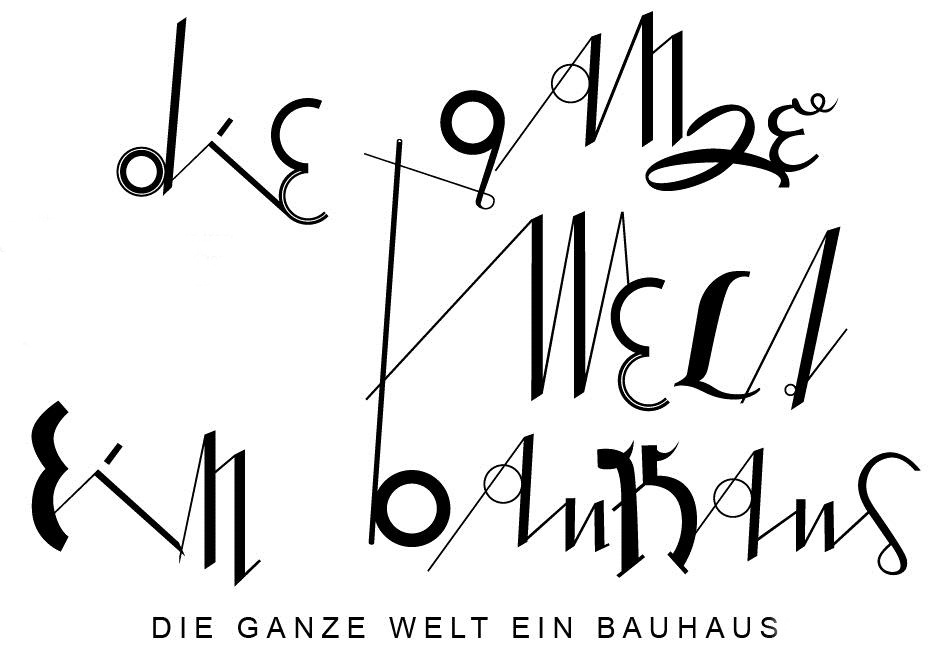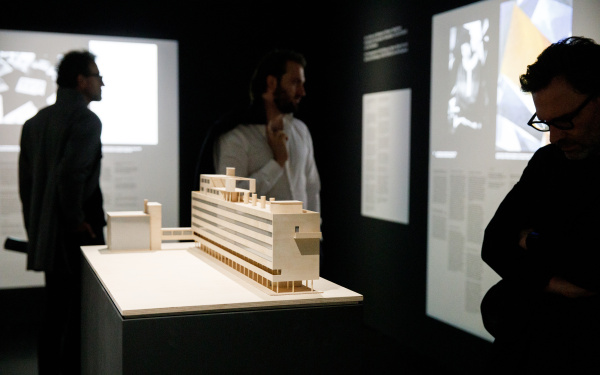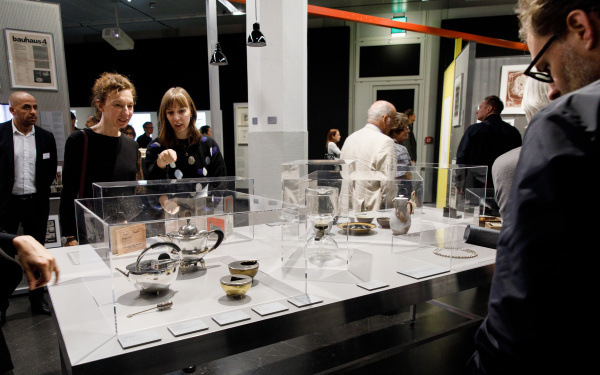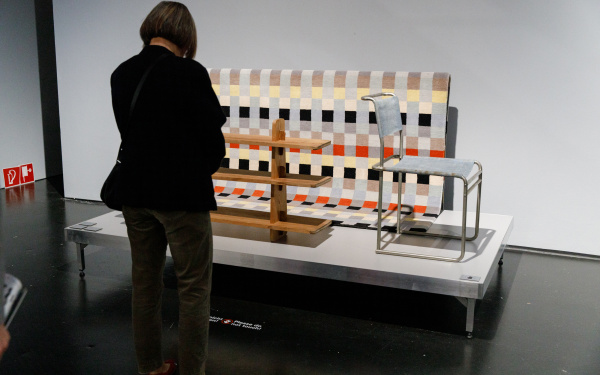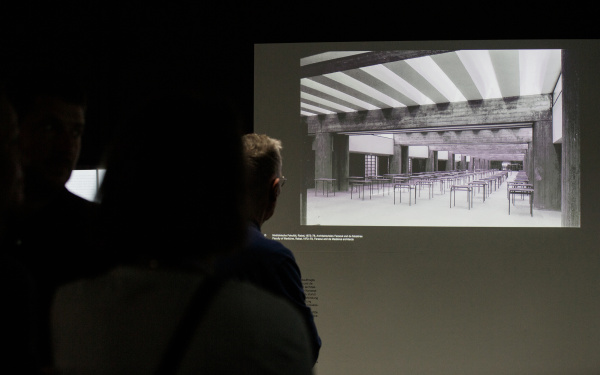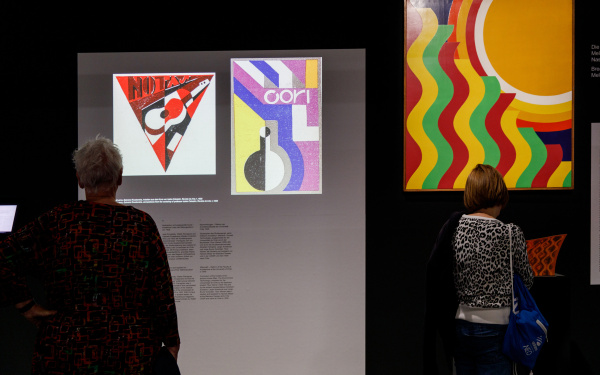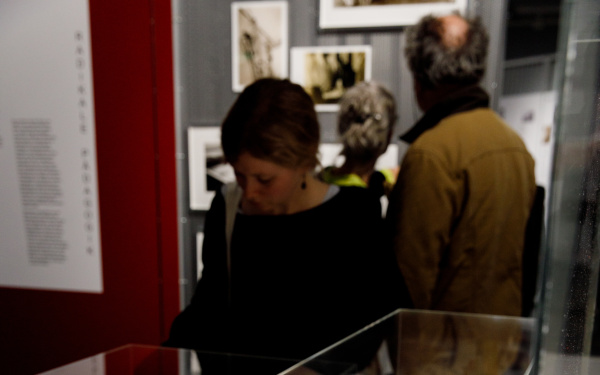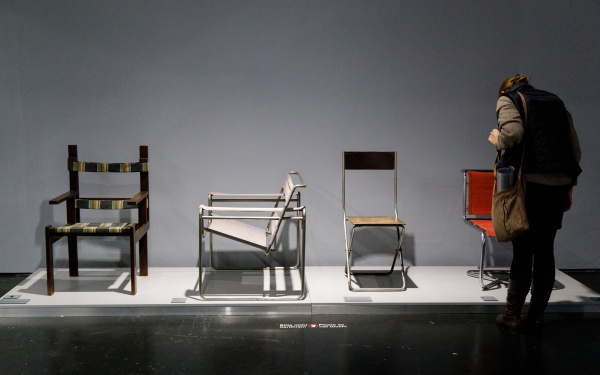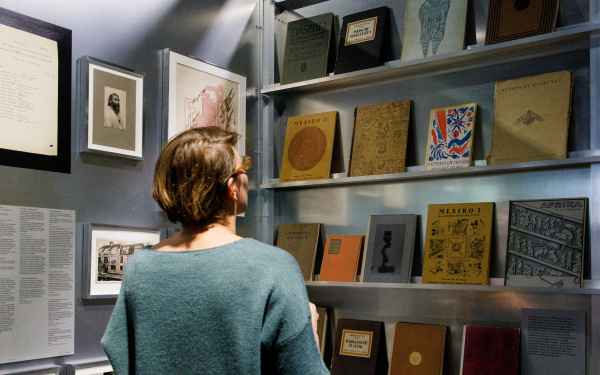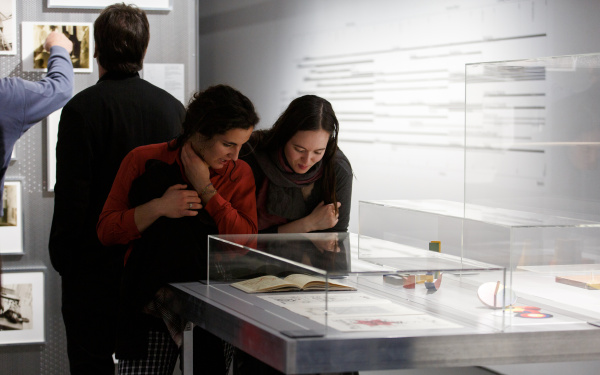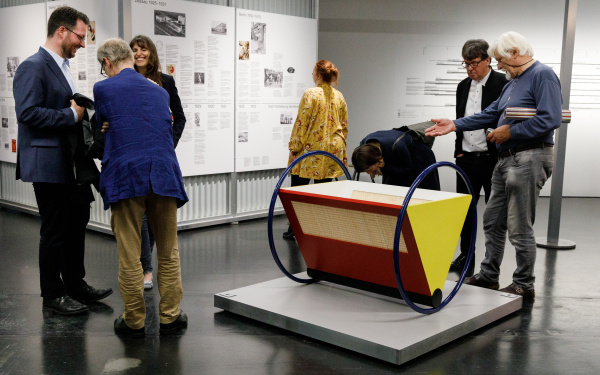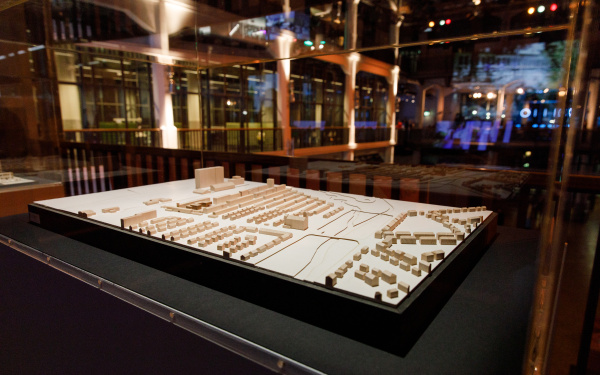- Exhibition
The Whole World a Bauhaus
Sat, October 26, 2019 – Sun, February 16, 2020
- Location
- Atrium 1+2, 1st floor
The Bauhaus was founded 1919 in Weimar, Germany. Between the spirit of new beginnings and the threatening rise of nationalism, the Bauhaus established itself in just 14 years and became a symbol of modern design and an avant-garde way of life.
Designs originating in this period are still produced today. But how did the Bauhaus manage to become such an innovative force in design and teaching, and in societies? The ifa exhibition »The Whole World a Bauhaus« is devoted to this theme in two parts.
The exhibition title is programmatic: »The Whole World a Bauhaus« is a quotation from Bauhaus student and teacher Fritz Kuhr (1928). It alludes to the fact that the Bauhaus redefined the parameters of art, crafts, and technology, when Walter Gropius declared the aim of design to include the whole spectrum of design and also social practice in every sense.
From 1919–1933: The Bauhaus in eight chapters
»The Whole World a Bauhaus« is divided into eight different chapters, each focusing on an aspect of work and life at the Bauhaus between 1919 and 1933. The section on »Floating« explores the Bauhaus interest in motifs of weightlessness and also looks at how glass and skeleton frameworks dematerialized architecture, or how the cantilever chair resting on air became symbolic of an entire design movement. The chapter on »Experiment« presents objects that were the result of new research into materials and space, and whose dimensions, proportions, and testing of materials were also designed to make mass production possible. While the »Total Work of Art« looks at the synthesis of all the arts, and also of art and science and of art and life, the chapter on »Community« presents key objects documenting everyday life at the Bauhaus, including the famous parties. The chapter »New Man« shows that the Bauhaus was not just based on utopian left-wing politics, but also explored other radical new political and philosophical identities. The chapter »Art, Crafts, Technology« presents the Bauhaus workshops and the products they made, while »Radical Pedagogy« looks at the organisation of the Bauhaus and its teaching practice. Crosscultural relations are explored in the chapter entitled »Encounters«. Cultural relations were encouraged at the Bauhaus through lectures, numerous visitors from around the world, the diverse collections of the Bauhaus Library, and also in the search for new forms in design. There were close contacts with the Vkhutemas art school in Moscow, for example, while Mies van der Rohe attempted to make the Bauhaus more international through partnerships in the USA.
Modern art worldwide
In the second part, these topics are taken up and their reception is presented in a global context. Here, the title served as a research commission to curators and scholars. »The whole world a Bauhaus?« shows case studies from Mexico City, Buenos Aires, Casablanca, Santiago de Chile, Moscow, Stuttgart and the USA. The focus here is not on the history of migration after the closure of the Bauhaus in 1933, but on appropriation and transcultural references during the 1920s. Thus, this department explores global connections within modernity, through which the Bauhaus gained in importance. This makes it clear that it was not an exclusive enterprise, but that in many parts of the world there were avant-gardes who saw themselves as motors of a new social, cultural, and political development and regarded the Bauhaus from their own perspectives and integrated it into their discourses.
In June 2018, the show celebrated its premiere in Buenos Aires and will then tour Argentina and Mexico before being shown at the ZKM in Karlsruhe in 2019.
Credits
Artistic lead: Valérie Hammerbacher (ifa)
Curator of the exhibition »The Whole World a Bauhaus« for the tour: Boris Friedewald
Curators of the contributions to regional focal points for the exhibition at the ZKM:
Enrique X. de Anda Alanís: Mexico City, Mexico
Silvia Fernández: Buenos Aires, Argentina
Margret Kentgens-Craig: Bauhaus Reception in the USA, 1919–1939
Alexander Klee: Stuttgart, Germany
Salma Lahlou: Casablanca, Morocco
David Maulen: Santiago de Chile, Chile
Christiane Post: Moscow, Russia
Curator for the contribution of the ZKM and for the period at the ZKM: Peter Weibel
Scenography: Studio Ilke Penzlien with Peter Kortmann and Robert Müller
Graphics: HIT
Project Management at ZKM: Hannah-Maria Winters
